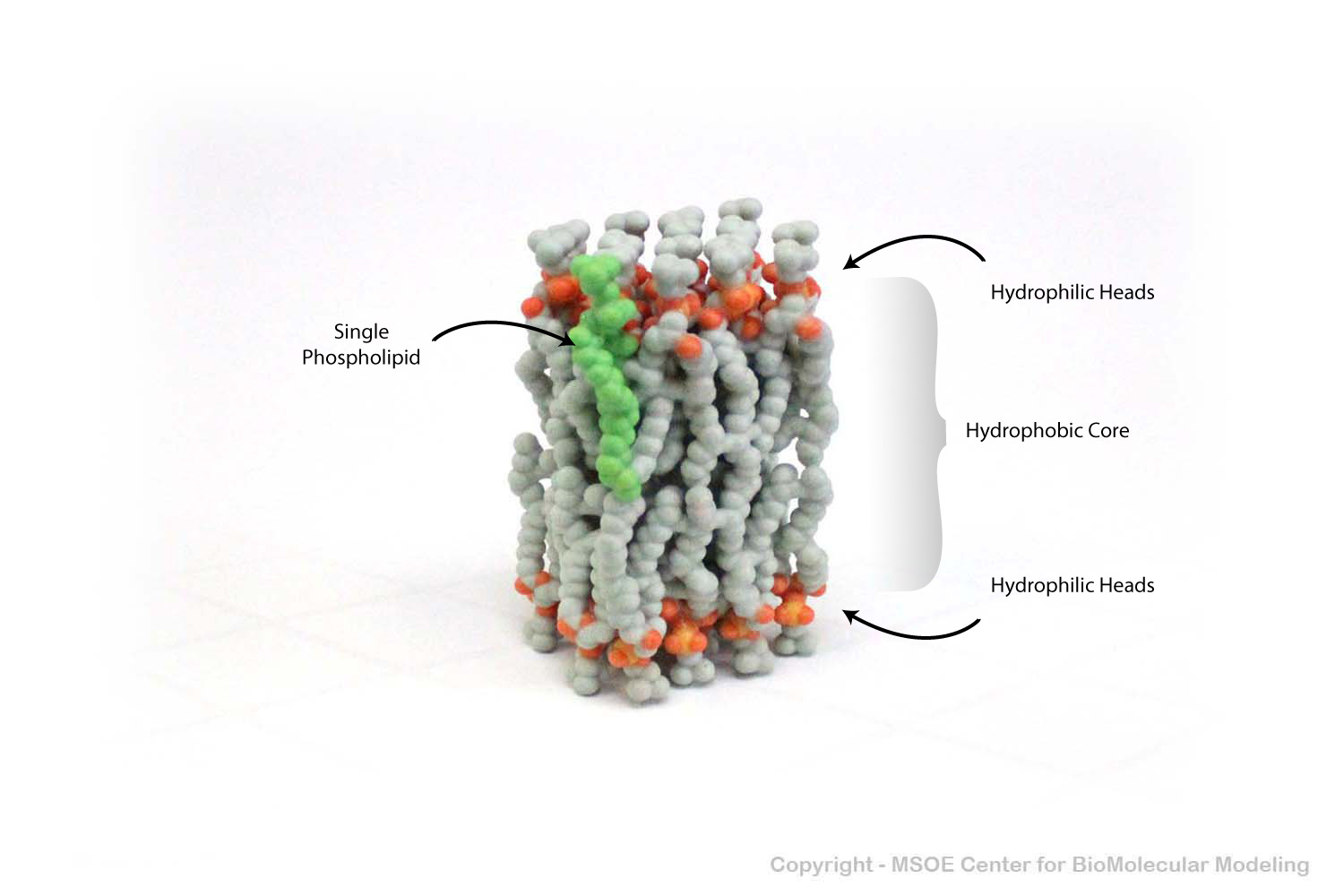
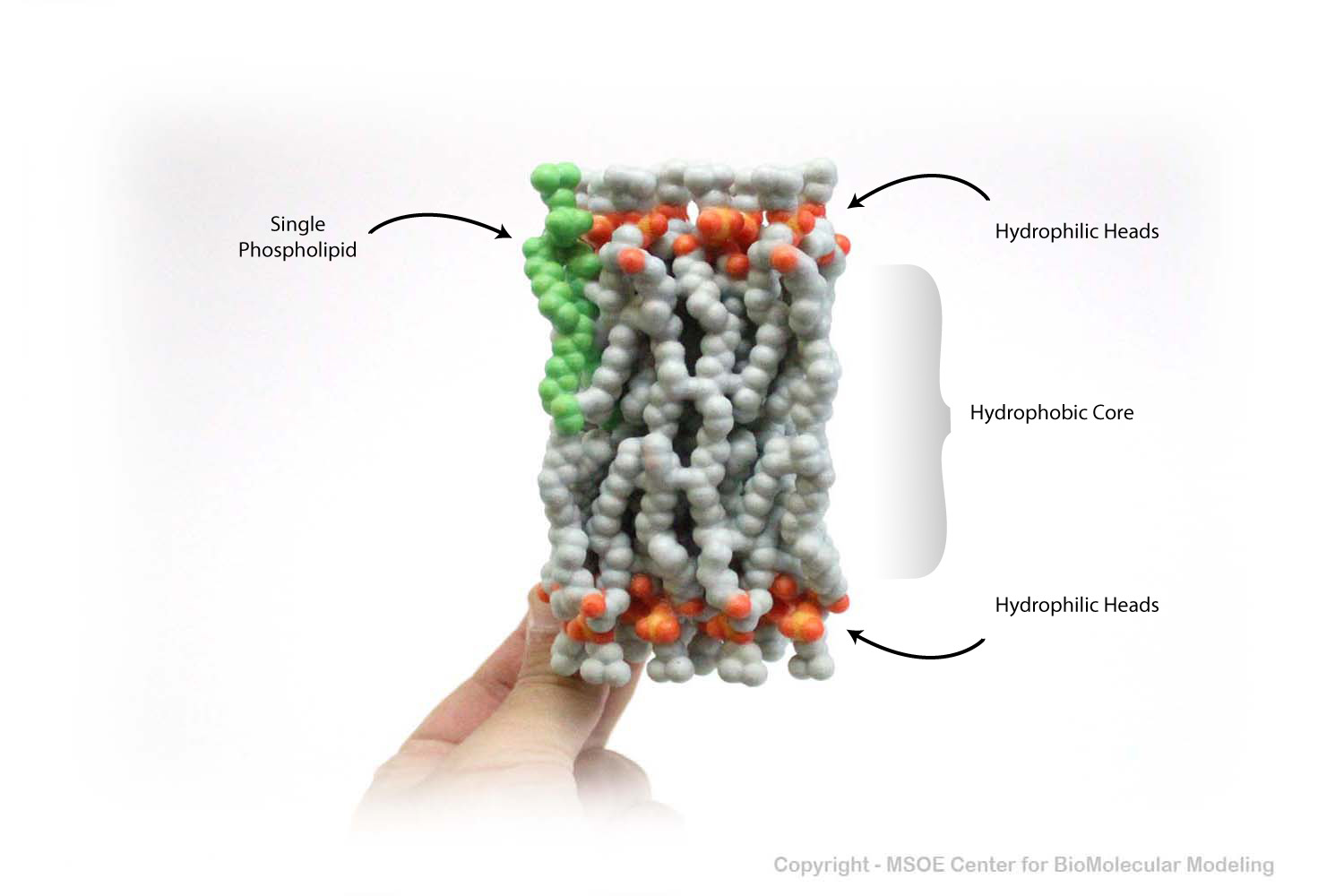
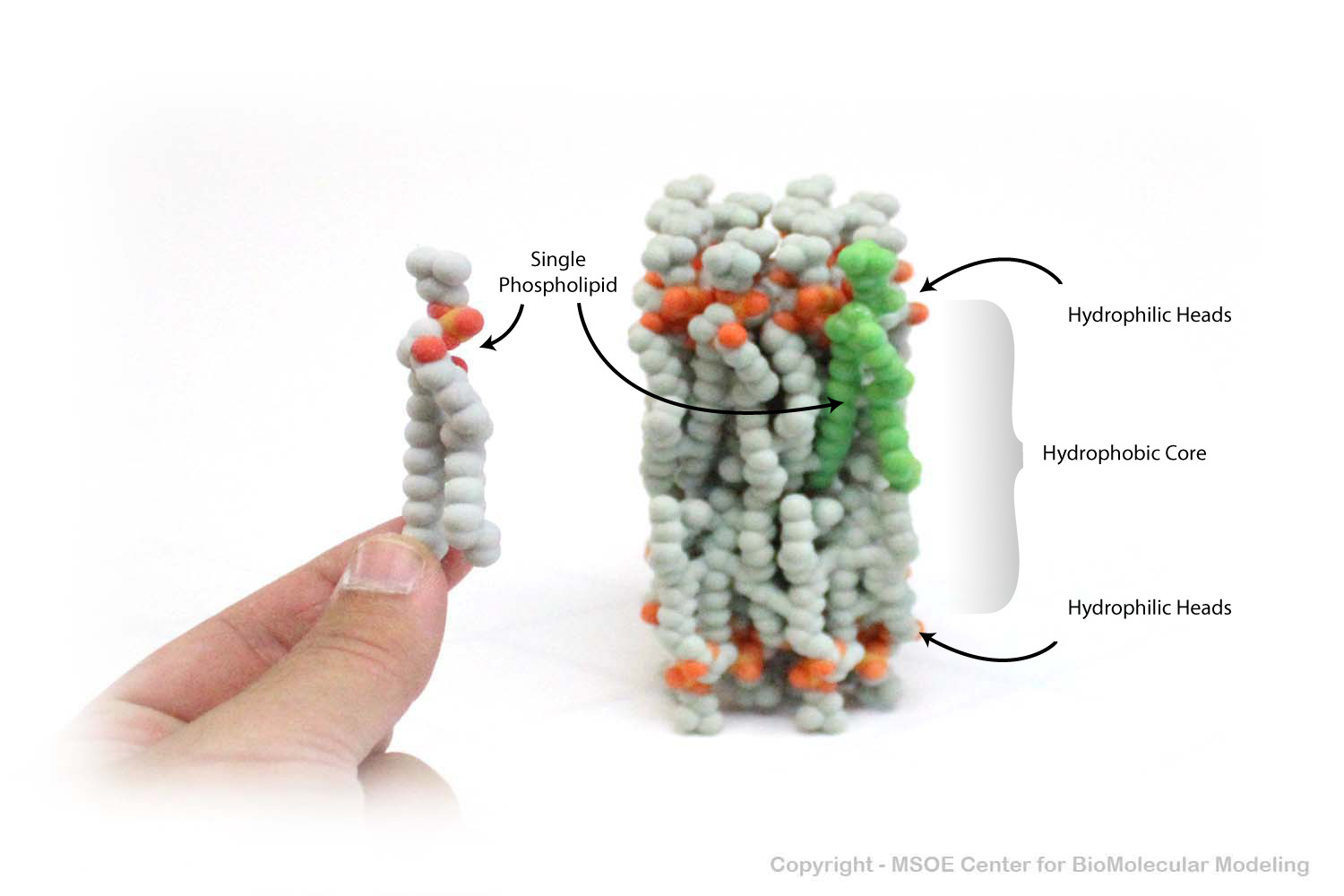
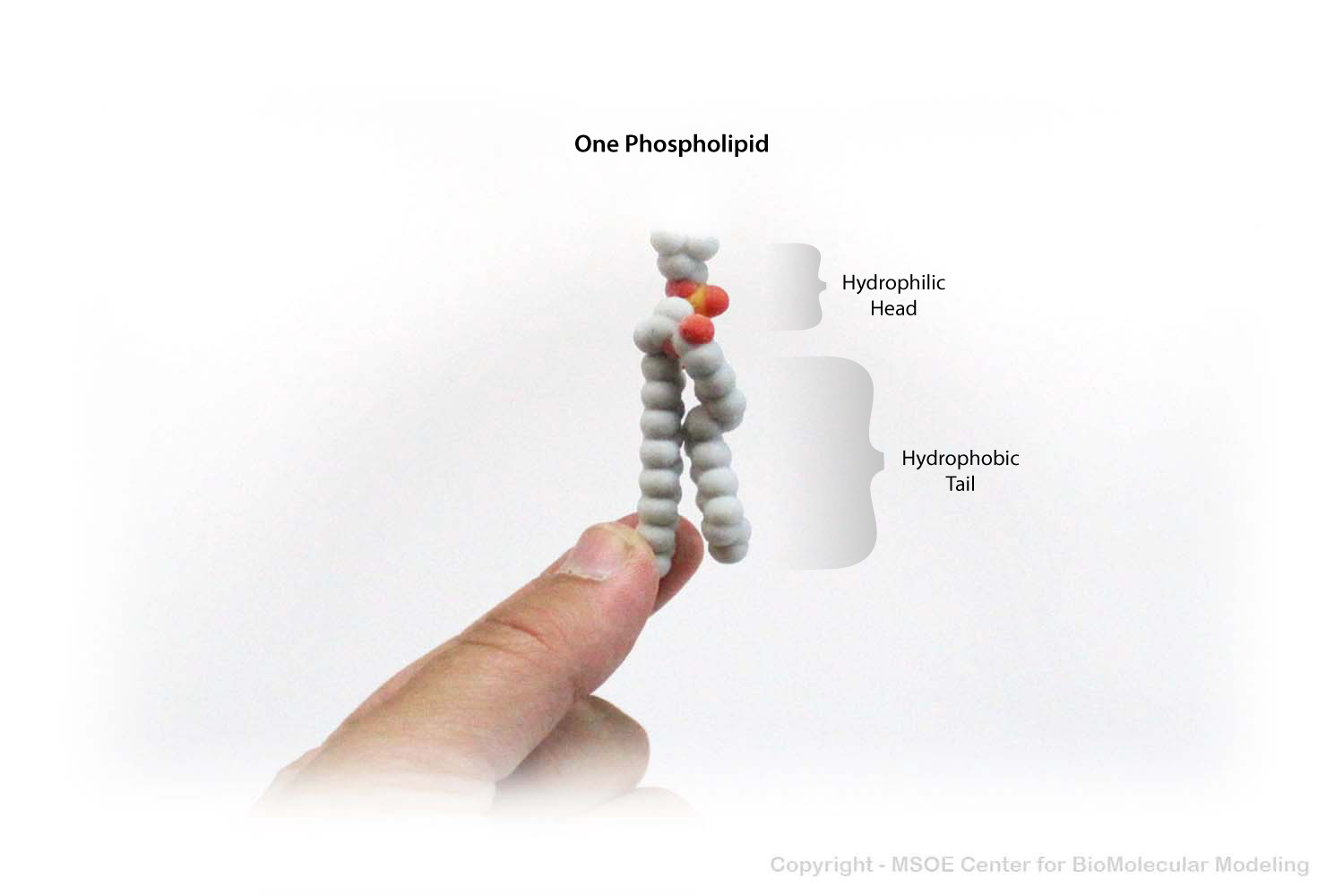

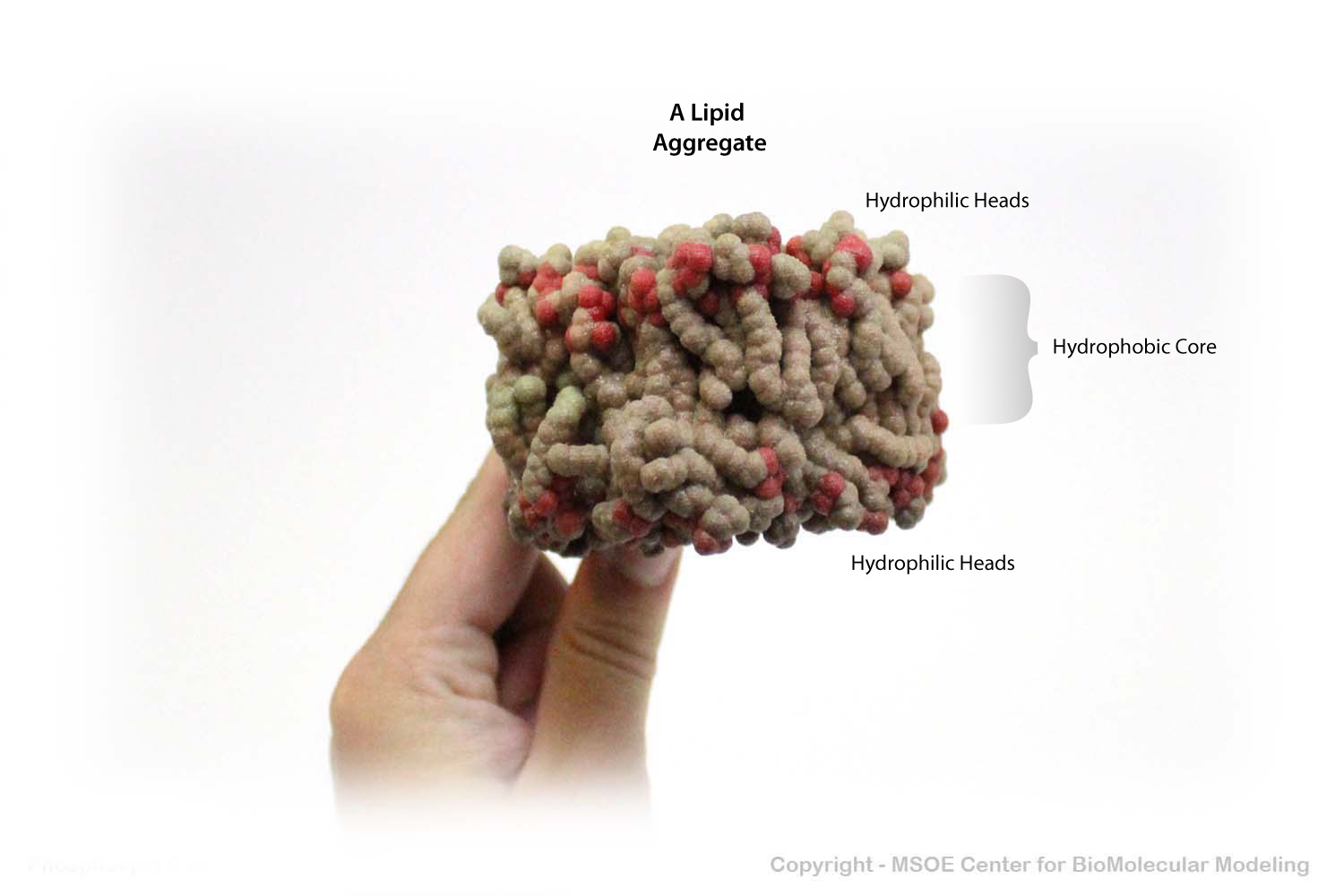



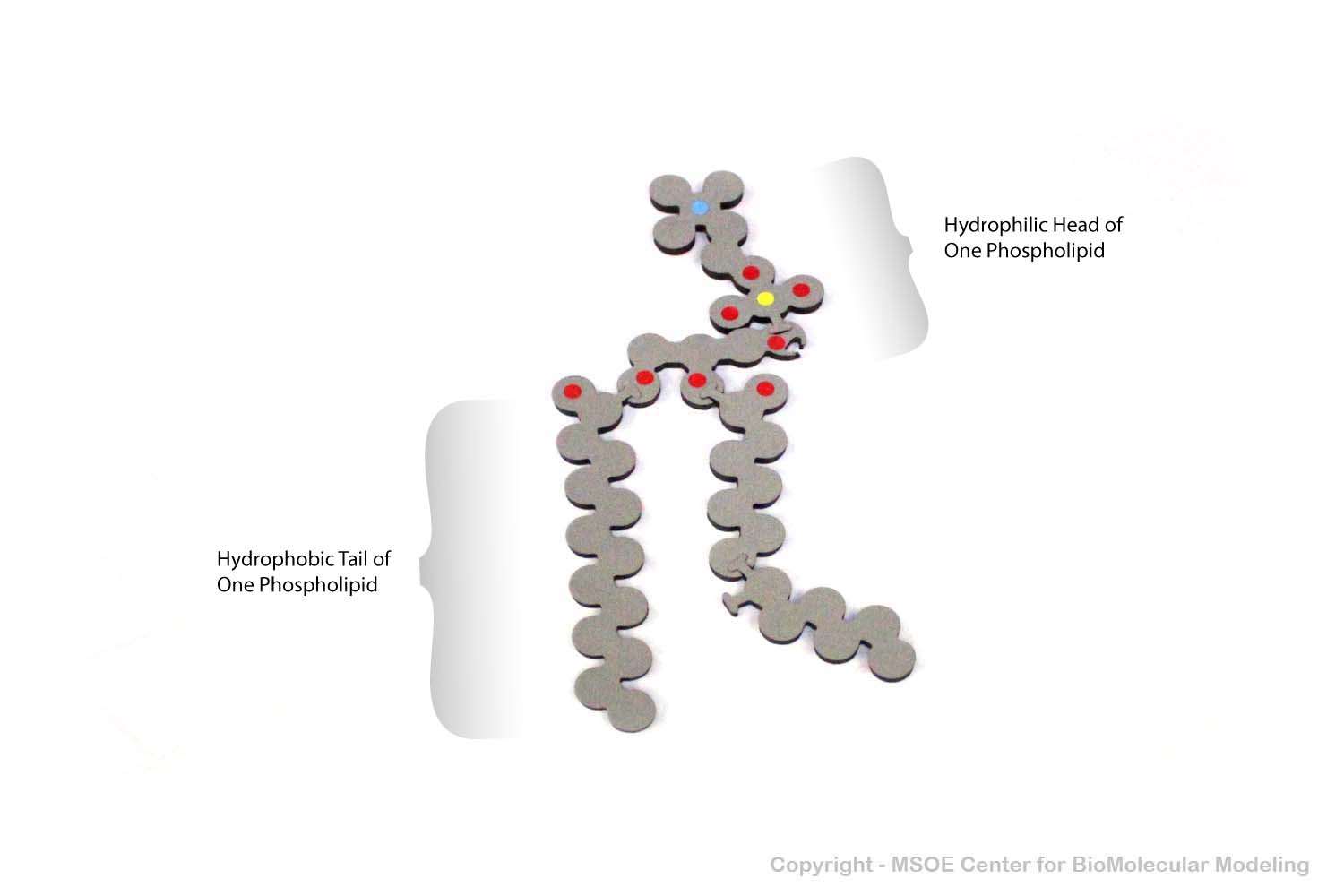
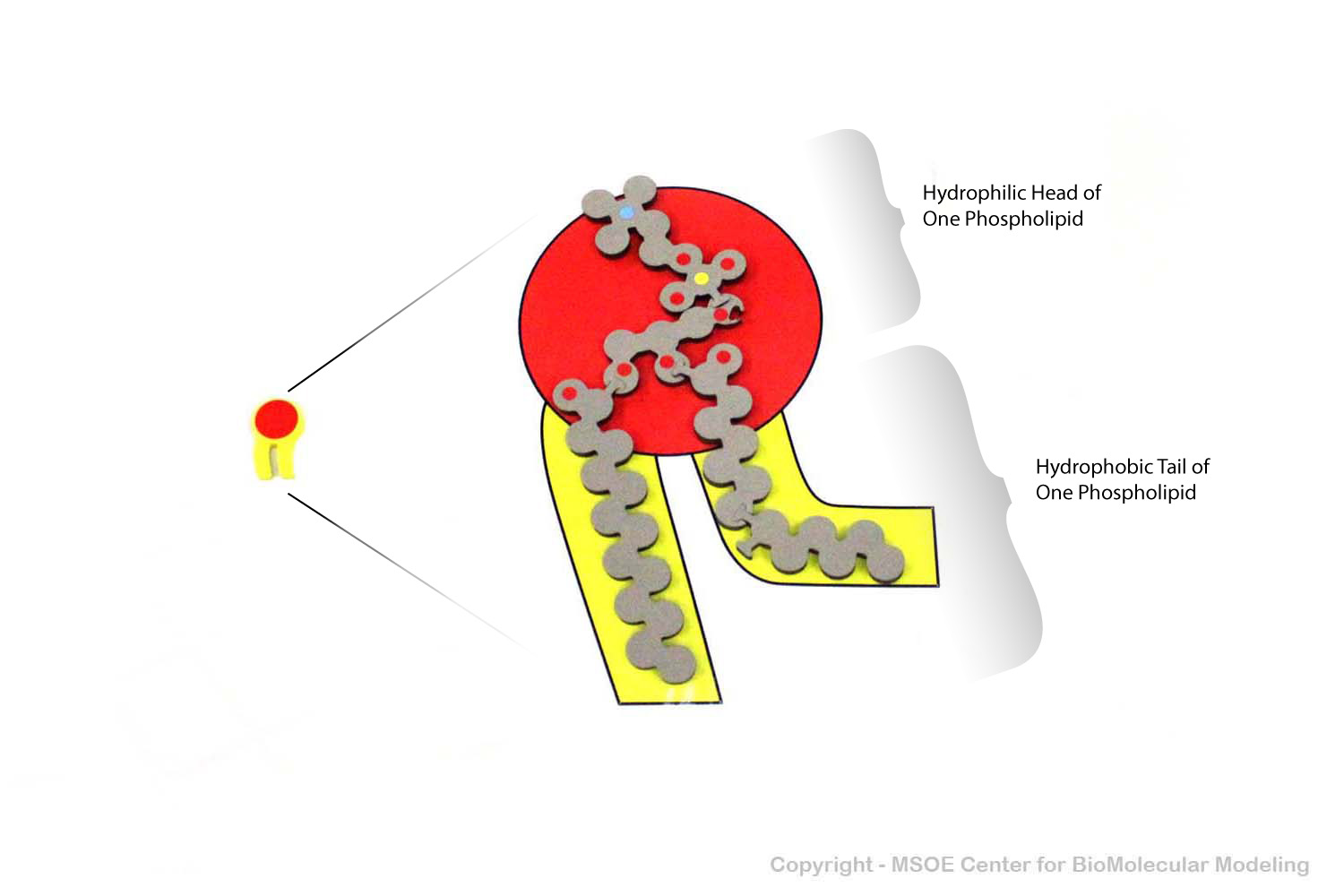

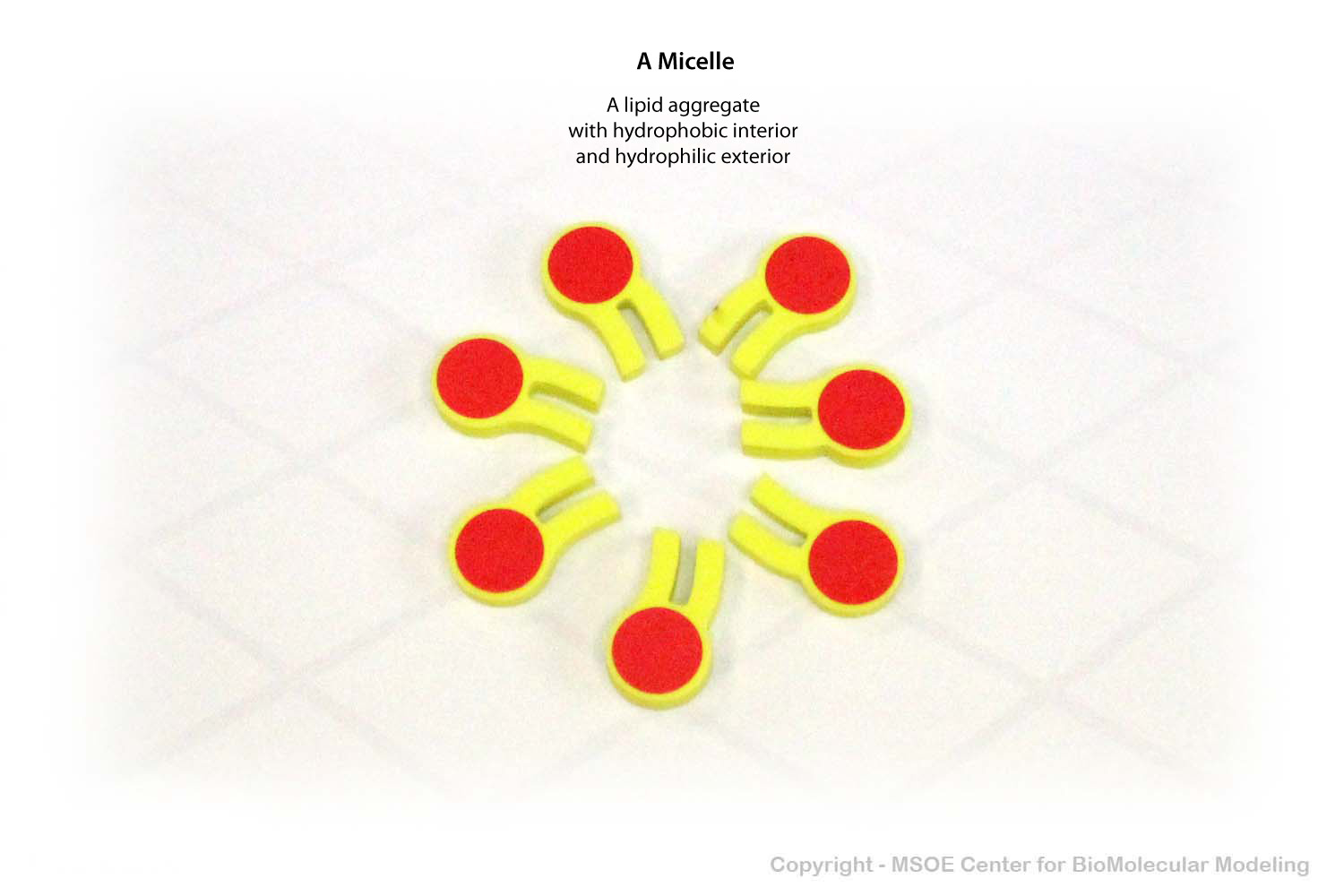
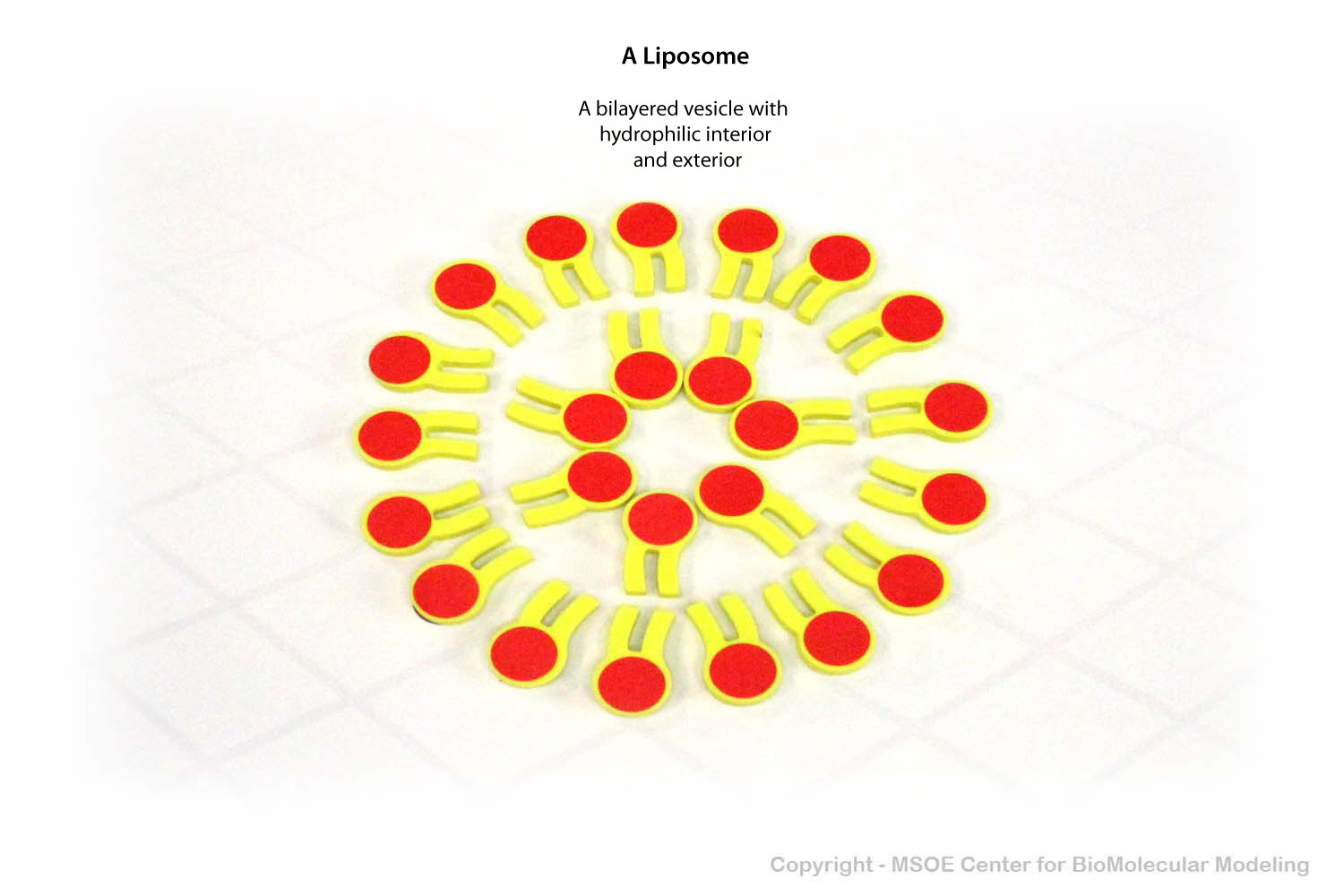

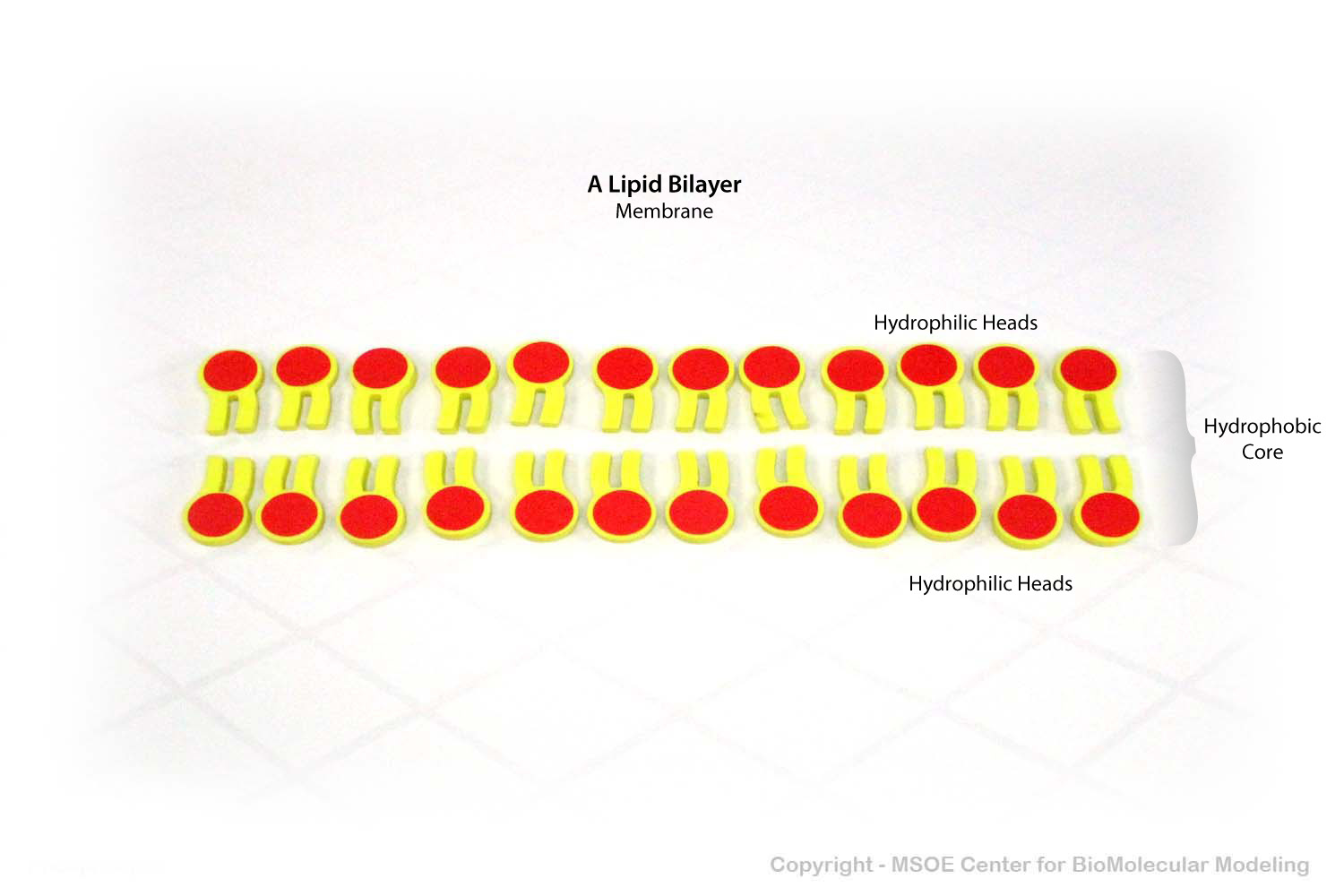
Individual phospholipids aggregate into a bilayer with a hydrophobic core and hydrophilic heads. A single phospholipid is shown in green to highlight the phospholipid monomer that makes up the bilayer.
Individual phospholipids aggregate into a bilayer with a hydrophobic core and hydrophilic heads. A single phospholipid is shown in green to highlight the phospholipid monomer that makes up the bilayer.
Individual phospholipids aggregate into a bilayer with a hydrophobic core and hydrophilic heads. A single phospholipid is shown in green to highlight the phospholipid monomer that makes up the bilayer.
A single phospholipid is composed of two hydrophobic tails and a hydrophilic head.
Individual phospholipids aggregate into a bilayer with a hydrophobic core and hydrophilic heads.
Individual phospholipids aggregate into a bilayer with a hydrophobic core and hydrophilic heads.
Individual phospholipids aggregate into a bilayer with a hydrophobic core and hydrophilic heads. This model uses magnets, allowing the two layers in the bilayer to separate.
Individual phospholipids aggregate into a bilayer with a hydrophobic core and hydrophilic heads. This model uses magnets, allowing the two layers in the bilayer to separate.
Individual phospholipids aggregate into a bilayer with a hydrophobic core and hydrophilic heads. This model uses magnets, allowing the two layers in the bilayer to separate.
A single phospholipid is composed of two hydrophobic tails and a hydrophilic head. This model allows for the assembly of the single phospholipid from two fatty acids, a glycerol core, and a phosphorus head, demonstrating dehydration synthesis in the process.
A single phospholipid is composed of two hydrophobic tails and a hydrophilic head. This model allows for the assembly of the single phospholipid from two fatty acids, a glycerol core, and a phosphorus head, demonstrating dehydration synthesis in the process.
A single phospholipid is composed of two hydrophobic tails and a hydrophilic head. An atomically accurate phospholipid is shown on the left and a simplified schematic phospholipid is shown on the right.
Multiple phospholipids can aggregate into a single-layered micelle, with hydrophobic tails pointed inwards and hydrophilic heads pointed outwards.
Multiple phospholipids can aggregate into a double-layered liposome, with hydrophobic tails in the middle of the bilayer and hydrophilic heads on the outside of the bilayer.
Multiple phospholipids can aggregate into a double-layered liposome, with hydrophobic tails in the middle of the bilayer and hydrophilic heads on the outside of the bilayer.
Multiple phospholipids can aggregate into a lipid bilayer, with hydrophobic tails in the middle of the bilayer and hydrophilic heads on the outside of the bilayer.
















